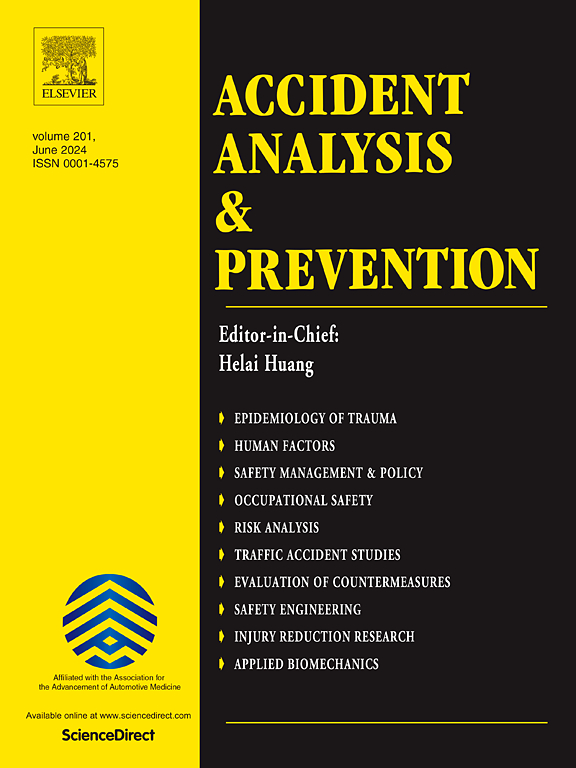S2O:衔接主观感受与客观评价的综合驾驶决策性能评价方法
IF 5.7
1区 工程技术
Q1 ERGONOMICS
引用次数: 0
摘要
自动驾驶决策是智能交通系统的关键模块之一,而如何全面、准确地评估驾驶性能则是一项重要挑战。偏颇的评估会误导和阻碍决策的修改和发展。目前的规划评估指标包括偏离真实驾驶轨迹和客观驾驶体验指标。前者并不一定代表良好的驾驶性能,因为人类驾驶员也会犯错,而且在交互式闭环系统中已被证明是无效的。另一方面,现有的客观驾驶体验模型只考虑了有限的因素,缺乏全面性。而且各种因素的整合机制依赖于直观经验,缺乏精确性。在这项研究中,我们提出了一种新型的综合决策评价方法--S2O,它是人类主观感受与客观评价之间的桥梁。首先,建立了安全性、时间效率、舒适性和能源效率四种驾驶因素的修正基本模型,以涵盖常见的驾驶因素。然后,基于对人类评分分布规律性的分析,设计了一个分段线性拟合模型,并结合一个互补的 SVM 分段分类器,用客观驾驶因素项来表达人类的主观评分。实验在 D2E 数据集上进行,该数据集包括约 1,000 个驾驶案例和 40,000 个人类评分。结果表明,在百分比标度下,S2O 与地面实况的平均绝对误差为 4.58。与基线相比,评估误差减少了 32.55%。在 SUMO 平台上的实施证明了在线评估的实时效率,而对三种自动驾驶规划算法的性能评估验证则证明了其可行性。本文章由计算机程序翻译,如有差异,请以英文原文为准。
S2O: An Integrated driving decision-making performance evaluation method bridging subjective feeling to objective evaluation
Autonomous driving decision-making is one of the critical modules towards intelligent transportation systems, and how to evaluate the driving performance comprehensively and precisely is a crucial challenge. A biased evaluation misleads and hinders decision-making modification and development. Current planning evaluation metrics include deviation from the real driver trajectory and objective driving experience indicators. The former category does not necessarily indicate good driving performance since human drivers also make errors and has been proven to be ineffective in interactive close-loop systems. On the other hand, existing objective driving experience models only consider limited factors, lacking comprehensiveness. And the integration mechanism of various factors relies on intuitive experience, lacking precision. In this research, we propose S2O, a novel integrated decision-making evaluation method bridging subjective human feeling to objective evaluation. First, modified fundamental models of four kinds of driving factors which are safety, time efficiency, comfort, and energy efficiency are established to cover common driving factors. Then based on the analysis of human rating distribution regularity, a segmental linear fitting model in conjunction with a complementary SVM segment classifier is designed to express human’s subjective rating by objective driving factor terms. Experiments are conducted on the D2E dataset, which includes approximately 1,000 driving cases and 40,000 human rating scores. Results show that S2O achieves a mean absolute error of 4.58 to ground truth under a percentage scale. Compared with baselines, the evaluation error is reduced by 32.55%. Implementation on the SUMO platform proves the real-time efficiency of online evaluation, and validation on performance evaluation of three autonomous driving planning algorithms proves the feasibility.
求助全文
通过发布文献求助,成功后即可免费获取论文全文。
去求助
来源期刊

Accident; analysis and prevention
Multiple-
CiteScore
11.90
自引率
16.90%
发文量
264
审稿时长
48 days
期刊介绍:
Accident Analysis & Prevention provides wide coverage of the general areas relating to accidental injury and damage, including the pre-injury and immediate post-injury phases. Published papers deal with medical, legal, economic, educational, behavioral, theoretical or empirical aspects of transportation accidents, as well as with accidents at other sites. Selected topics within the scope of the Journal may include: studies of human, environmental and vehicular factors influencing the occurrence, type and severity of accidents and injury; the design, implementation and evaluation of countermeasures; biomechanics of impact and human tolerance limits to injury; modelling and statistical analysis of accident data; policy, planning and decision-making in safety.
 求助内容:
求助内容: 应助结果提醒方式:
应助结果提醒方式:


